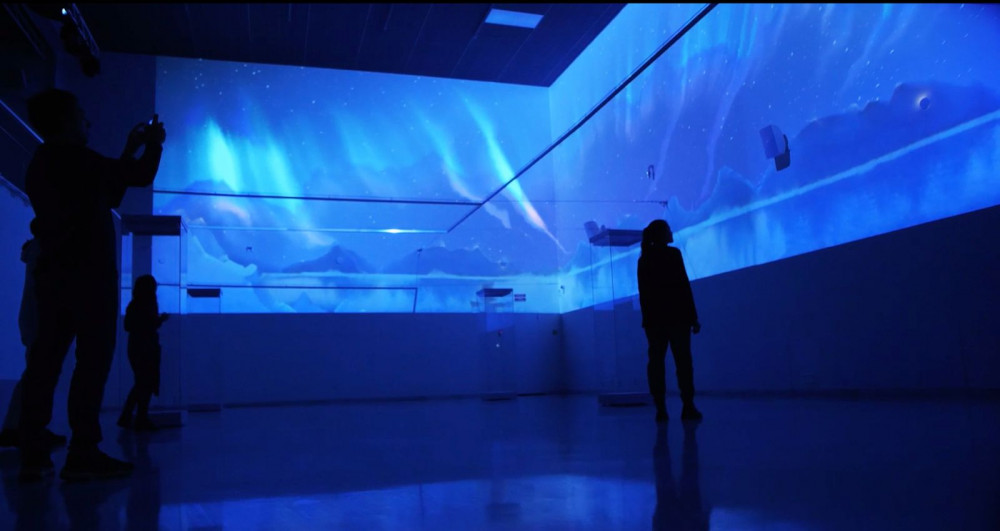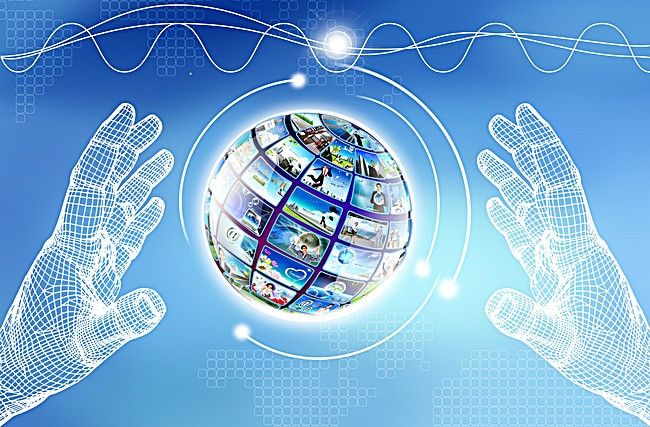Introduction
As era maintains to evolve, it has drastically impacted various industries, such as artwork and design. Creative era refers to using generation to beautify creativity and create progressive works of artwork or layout. This can consist of virtual reality, augmented reality, 3D printing, motion pics, and artificial intelligence, among others.
Creative era is becoming increasingly vital in art and layout because it gives new possibilities for creativity and innovation. With those new equipment, artists and architects can discover new forms of expression and create works that were as soon as impossible to understand. It also lets in them to collaborate and percentage thoughts with others from round the arena.
In this newsletter, we will explore how creative generation is reworking artwork and layout. We will observe a number of the most popular technology used in artwork and layout today, their advantages and disadvantages, and the way they may be used in collaboration. Let’s dive in and discover the interesting global of innovative era in art and layout.

Creative Technology in Art
Artists have always been at the forefront of exploring new technologies as a means of expressing themselves. With the advent of creative technology, artists now have access to new tools that allow them to create immersive experiences for their audiences. Here are some of the most popular creative technologies used in art today:
A. Virtual Reality and Augmented Reality
Virtual Reality (VR) and Augmented Reality (AR) are two of the most exciting technologies used in art today. VR allows artists to create immersive experiences for their audience, transporting them to new worlds and giving them a new perspective on the artwork. AR, on the other hand, allows artists to overlay digital content on the physical world, creating interactive and engaging experiences.
Some examples of VR/AR in art include:
- “The VR Museum of Fine Art” by Geoffrey Lillemon and David Lobser, which allows visitors to experience classic artworks in a virtual gallery.
- “Through the Eyes of the Animal” by Marshmallow Laser Feast, which uses VR to simulate the experience of being an animal in the forest.
- “AR Art” by Ivan Godard, which uses AR to overlay digital content on physical art, creating a new interactive experience.
Advantages of using VR/AR in art include the ability to create immersive and interactive experiences for the audience. However, a disadvantage is that it can be costly and technically challenging to create these experiences.
B. Digital Art
Digital art refers to artworks that are created using digital tools such as software, tablets, or computers. This type of art has become increasingly popular in recent years due to its accessibility and versatility. With digital tools, artists can create complex and detailed artworks that were once impossible to create with traditional media.
Some examples of digital art include:
- “The Umbrella Sky Project” by Sextant Produces, which uses digital technology to create a colorful and immersive installation in public spaces.
- “Digital Paintings” by David McLeod, which are created using 3D modeling software and digital painting techniques.
- “Motion Graphics” by Beetle, which are short animations created using a combination of 3D modeling, digital painting, and motion graphics techniques.
Advantages of creating digital art include the ability to create highly detailed and precise artworks, as well as the ability to easily make changes and revisions. However, a disadvantage is that digital artworks can sometimes lack the tactile and physical qualities of traditional artworks.
C. Generative Art
Generative art refers to artworks that are created using algorithms or computer code. This type of art is becoming increasingly popular due to its ability to create complex and dynamic artworks that are constantly evolving and changing.
Some examples of generative art include:
- “Unnumbered Sparks” by Janet Hellman and Aaron Kotlin, which uses a computer program to generate a constantly changing light installation in public spaces.
- “Recursive Drawing” by David White, which is an online tool that allows users to create complex and beautiful artworks using only a few simple rules.
- “Deep Dream” by Google, which uses a neural network to generate surreal and dreamlike images.
Advantages of creating generative art include the ability to create highly complex and dynamic artworks that are constantly evolving. However, a disadvantage is that it can be technically challenging to create these artworks and requires a certain level of programming knowledge.
In conclusion, creative technology has opened up new opportunities for artists to explore and create innovative works of art. Whether it’s through VR/AR, digital art, or generative art, artists are using these new tools to push the boundaries of what’s possible and create truly Tech Blog Writer unique and immersive experiences for their audiences.

Creative Technology in Design
Designers are constantly seeking out new ways to streamline their creative process and create more efficient and effective designs. With the rise of creative technology, designers now have access to a range of tools that can help them achieve their goals. Here are some Tech Blog Writer of the most popular creative technologies used in design today:
A. 3D Printing
3D printing is a technology that allows designers to create three-dimensional objects from a digital model. This technology has revolutionized the way designers approach their work, allowing them to quickly create prototypes and iterate on designs.
Some examples of 3D printing in design include:
- “Adidas Future craft 4D” by Adidas, which uses 3D printing technology to create customized shoe soles.
- “Project Dream catcher” by Auto desk, which uses 3D printing to create highly complex and intricate designs.
- “The World’s First 3D Printed Car” by Local Motors, which uses 3D printing to create a fully functional car.
Advantages of using 3D printing in design include the ability to quickly create prototypes and iterate on designs, as well as the ability to create highly complex and intricate designs. However, a disadvantage is that it can be costly and time-consuming to create larger objects using 3D printing technology.
B. Artificial Intelligence
Artificial Intelligence (AI) is a technology that allows computers to learn and adapt to new information, making it a powerful tool for designers. With AI, designers can quickly analyze large amounts of data and create highly personalized designs for their clients.
Some examples of AI in design include:
- “The Next Rembrandt” by ING and J. Walter Thompson Amsterdam, which uses AI to create a new painting in the style of Rembrandt.
- “Designs cape” by Auto desk, which uses AI to help designers create more efficient and effective designs.
- “The Grid” by The Grid, which uses AI to create custom websites based on user input.
Advantages of using AI in design include the ability to quickly analyze large amounts of data and create highly personalized designs. However, a disadvantage is that it can be difficult to train AI algorithms to create designs that are truly unique and innovative.
C. Motion Graphics
Motion graphics is a technology that combines animation and graphic design to create engaging and dynamic visuals. This technology has become increasingly popular in recent years due to its ability to create highly effective marketing and advertising materials.
Some examples of motion graphics in design include:
- “Kinetic Typography” by Jesse Ros ten, which uses motion graphics to create engaging and dynamic typography.
- “The Golden Age of Video” by RSA, which uses motion graphics to create a visually stunning explanation of the history of video.
- “Motion Graphics for the Web” by Creative Bloq, which provides tips and tricks for creating effective motion graphics for the web.
Advantages of creating motion graphics include the ability to create engaging and dynamic visuals that can effectively communicate a message. However, a disadvantage is that it can be time-consuming and technically challenging to create highly complex motion graphics.
In conclusion, creative technology has had a significant impact on the field of design, providing designers with new tools and techniques to create more efficient and effective designs. Whether it’s through 3D printing, AI, or motion graphics, designers are using these new tools to create highly personalized and engaging designs that push the boundaries of what’s possible.

Creative Technology and Collaboration
Collaboration is an essential component of the creative process, allowing designers and artists to work together to create something truly unique and innovative. With the rise of creative technology, collaboration has become easier and more efficient than ever before. Here are some of the most popular collaborative technologies used in the creative industry today:
A. Remote Collaboration
Remote collaboration allows designers and artists to work together on a project from different locations. This technology has become increasingly popular in recent years due to its ability to save time and reduce costs associated with travel.
Some examples of remote collaboration include:
- “Google Docs” by Google, which allows multiple users to collaborate on a single document in real-time.
- “Trellis” by Atlantis, which allows users to create and assign tasks to team members, as well as track progress on projects.
- “Slack” by Slack Technologies, which allows team members to communicate in real-time via chat, voice, and video.
Advantages of remote collaboration include the ability to work with team members from anywhere in the world, as well as the ability to save time and reduce costs associated with travel. However, a disadvantage is that communication can sometimes be challenging due to language barriers or technical issues.
B. Virtual Collaboration
Virtual collaboration allows designers and artists to work together in a virtual environment, creating a highly immersive and engaging experience. This technology has become increasingly popular in recent years due to its ability to create highly effective and engaging presentations and pitches.
Some examples of virtual collaboration include:
- “Mozilla Hubs” by Mozilla, which allows users to create virtual rooms and collaborate on 3D models and designs.
- “Gravity Sketch” by Gravity Sketch Limited, which allows users to collaborate on 3D designs in a virtual environment.
- “SketchUp Viewer for VR” by Tremble Inc., which allows users to collaborate on 3D designs in a virtual reality environment.
Advantages of virtual collaboration include the ability to create highly engaging and immersive experiences, as well as the ability to collaborate on 3D designs in a highly interactive and intuitive way. However, a disadvantage is that it can be technically challenging to set up and use virtual collaboration tools.
In conclusion, creative technology has had a significant impact on collaboration in the creative industry, providing designers and artists with new tools and techniques to work together more efficiently and effectively. Whether it’s through remote collaboration or virtual collaboration, these new technologies are helping to push the boundaries of what’s possible in the world of art and design.
Conclusion
Creative technology has revolutionized the world of art and design, offering new ways for artists and designers to create, collaborate and share their work with the world. From virtual reality and augmented reality to 3D printing and artificial intelligence, creative technology is transforming the way we think about art and design.
A. Summary of the article
In this article, we explored the different ways that creative technology is transforming art and design. We looked at the various technologies being used in the creative industry, including virtual reality, digital art, generative art, 3D printing, artificial intelligence, and motion graphics. We also examined the impact of collaboration on the creative process, including remote and virtual collaboration.
B. Future of creative technology in art and design
Looking to the future, it’s clear that creative technology will continue to play an important role in art and design. As technology continues to advance, new tools and techniques will emerge, providing artists and designers with even more ways to express their creativity and bring their ideas to life.
Some possible future developments in creative technology include the increased use of machine learning and AI in the creation and manipulation of digital art, the use of blockchain technology to protect and authenticate art, and the development of new technologies that allow for even more immersive and interactive experiences in virtual and augmented reality.
C. Final thoughts
In conclusion, creative technology is transforming the world of art and design, providing new opportunities for artists and designers to explore their creativity and push the boundaries of what’s possible. As these technologies continue to evolve, we can expect to see even more exciting and innovative developments in the years to come. Whether you’re a professional artist or designer, or simply someone who appreciates art and design, the future looks bright for creative technology.
Read More: The Role of Artificial Intelligence in Creative Technology
